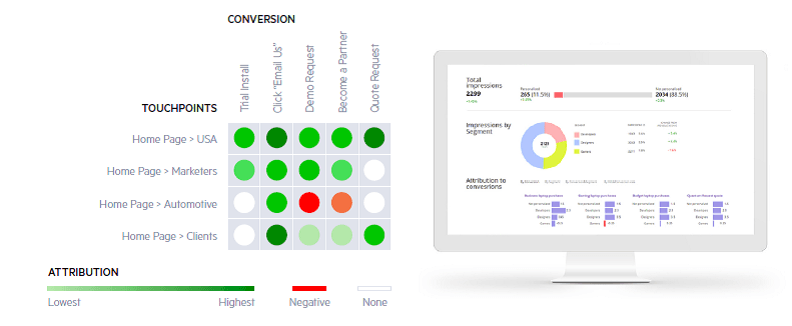Methods to Personalize the Customer Journey

Personalizing the web experience for your customers has never been more important. A growing number of businesses are adopting personalization, and an increasing number of users have come to expect it. In Part 1 of this series we looked at how personalization works. In this installment, we will explore how you can get started with personalization.
Given that there are so many personalization options, it can be hard to determine where to even start. Here are two methods you can consider to get you started with personalization.
1. Agile Marketing
One of the challenges with personalization is that you can personalize based on dozens of parameters and arranging the content for even a few of the options creates a very large project. Agile marketing is a good framework for working on personalization projects because it allows you to break the tasks into smaller sprints and iterate for results. Below is an example of a very fast, agile, data- driven way to decide where to start with personalization.
- Choose a specific segment to target such as a geographic region or a campaign.
- Pick a highly visible resource that a significant number of people will see to personalize, such as your homepage.
- Pick multiple conversion rates that you can track.
- Personalize a resource and start tracking the results against a non-personalized version to compare results. Make sure to collect a statistically significant set of data of around 40-50 conversions.
- Choose a different segment to target and compare to the original to see if results differ.
If the chosen target does not produce a good result, you have to determine if your personalization tactics were incorrect or you can also try to choose another target to sample to see if you get better data. However, even if you do not get the desired results you have created a baseline to use as a comparison for any new tests you run.
2. Conversion Testing
The diagram below shows another method to consider; conversion testing. With this method you test multiple approaches and then choose the ones with the best results. This approach guarantees a shorter path to conversion rate optimization. The strength of conversion testing is that it is even more data driven than the agile approach, enabling you to use hard information to guide your choices. Running a small test and returning the attribution numbers associated with it gives you the tools for data-driven decision making that you may have been lacking in the past. This is where analytics can really impact your overall business strategy and results.

So how do you determine where to begin personalizing? Start with these two important questions “Who do I target?” and “What message do I target them with?” The answers will lead to two options: an educated guess or analytics-derived recommendations.
1. Educated Guessing
An educated guess is still a data-driven approach. Maybe a specific type of persona buys much more than the others or sales in a specific geographic region are much higher than in other areas. This type of data can help you form an educated guess on what to do to improve.
Even if you don’t have a specific idea about who to target, you can use conversion rates as a starting point. For example, perhaps your conversion from anonymous to known lead is just 1 percent, while the rest of your conversions down the funnel are in the double digits. This would clearly indicate that increasing this conversion even by one percent could provide a great impact to the top-line. This provides enough information to perform an educated guess on where to concentrate.
2. Predictive Guessing
Another way is to have an algorithm guess where your biggest opportunity is. Using predictive analytics, if available, to look for insights in the data will tell you at exactly which level you can influence a conversion rate.
This series of posts are meant to provide you with a broad sense of the opportunities for personalization, and we’ll continue to break the guide down in the coming weeks. In our next post, we will look at solving some of the challenges of personalization. If you would like to read the entire guide or share it with colleagues, you can download it here.

Barrett Coakley
Barrett Coakley is the Senior Manager, Products Marketing for the Progress Sitefinity Content Management System (CMS) and the Sitefinity DEC, a digital marketing analytics platform. Mr. Coakley has worked in various marketing positions for both startup and large technology organizations for over 20 years.

